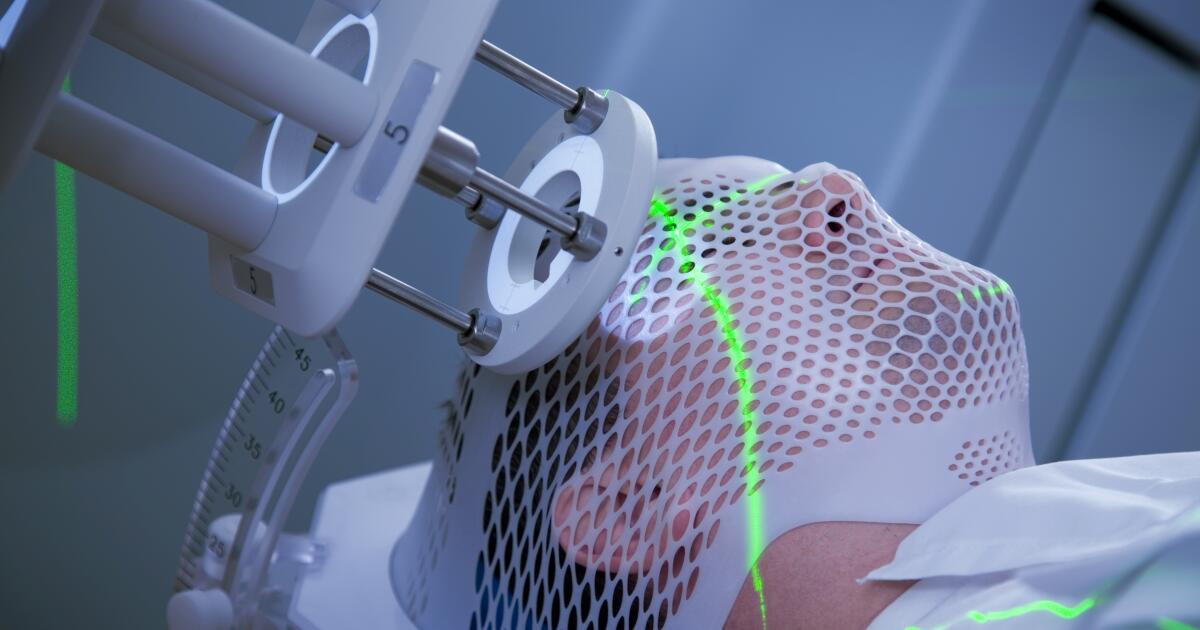Stereotactic Radiotherapy for Brain Tumors

What is Stereotactic Radiotherapy?
In the realm of medical advances, Stereotactic Radiotherapy (SRT) stands out as a groundbreaking treatment for brain tumors. This sophisticated procedure leverages high-precision radiation to target brain tumors, significantly reducing the impact on surrounding healthy tissue. It is particularly effective for small, irregularly shaped tumors or those situated close to sensitive brain areas.
Understanding Stereotactic Radiotherapy
Stereotactic Radiotherapy harnesses the power of advanced imaging techniques, such as MRI and CT scans, to determine the exact location of a brain tumor. This allows for a targeted approach where high doses of radiation are delivered directly to the tumor, sparing nearby healthy tissue.
Benefits of Stereotactic Radiotherapy
Precision: The accuracy of SRT is measured in millimeters, ensuring the radiation is focused solely on the tumor.
Reduced Side Effects: By minimizing radiation exposure to healthy tissue, patients experience fewer side effects.
Convenience: Typically an outpatient procedure, SRT does not usually require a hospital stay.
Versatility: It’s effective for various types of brain tumors, including some that are inoperable.
Treating Different Brain Tumors
SRT is versatile, treating a range of brain tumors:
Metastatic Brain Tumors: These are secondary tumors that have spread to the brain from other areas of the body.
Meningiomas: Generally benign, these tumors arise from the membranes around the brain.
Pituitary Adenomas: These benign tumors are located in the pituitary gland.
Gliomas: Originating from the brain’s glial cells, these can be either benign or malignant.
The Procedure of Stereotactic Radiotherapy
Pre-Treatment Planning: Detailed brain images are obtained to map the tumor’s exact location.
Immobilization: A custom-made head frame or mask is used to keep the patient’s head still during treatment.
Treatment Delivery: Radiation is precisely directed at the tumor from various angles.
Post-Treatment Care
Monitoring: To ensure the treatment’s success, it’s vital to undergo regular imaging scans. These scans provide detailed insights into the progress being made and help in adjusting the treatment plan if necessary. Frequent monitoring allows healthcare providers to track the treatment’s efficacy and make informed decisions about future care strategies. It’s a proactive approach that emphasizes the importance of vigilance in medical treatments.
Side Effects: While undergoing treatment, patients may encounter various side effects, which can vary in intensity. Commonly reported issues include fatigue, which can impact daily activities. Skin reactions, such as redness, itching, or irritation, might also occur, depending on the nature of the treatment. Additionally, temporary hair loss is a possibility, which can be distressing for patients. It’s important to discuss these potential side effects with healthcare providers and understand the ways to manage them effectively.
Recovery: Post-treatment, the focus shifts to recovery and returning to normal activities. In many cases, patients can resume their daily routines shortly after treatment. However, the recovery period can vary based on the individual’s overall health and the specifics of the treatment. During this phase, it’s crucial to follow medical advice, engage in appropriate physical activities, and maintain a balanced diet to support the body’s healing process. Regular follow-ups with healthcare providers are also essential to monitor recovery progress and address any concerns that may arise.
Technological Advancements
Recent developments in SRT include frameless systems for enhanced patient comfort and improved precision. Real-time imaging technology allows for continuous accuracy, adapting to any tumor movements during treatment.
Conclusion
Stereotactic Radiotherapy offers an effective, minimally invasive treatment option for brain tumors, promising improved outcomes with minimal side effects. Ongoing advancements continue to elevate its efficacy and patient experience.
Stereotactic Radiotherapy stands as a significant advancement in the field of oncology, particularly for the treatment of brain tumors. Its precision, reduced side effects, and adaptability make it a preferred option for many patients and healthcare providers. With continuous advancements, SRT is poised to become even more integral in the fight against brain cancer.
In conclusion, Stereotactic Radiotherapy represents a significant leap forward in brain tumor treatment. Its ability to precisely target tumors while minimizing damage to surrounding healthy tissue has revolutionized treatment options for patients, a fact well recognized by leading experts like Dr. Vijay Karan Reddy, one of the best oncologists in Hyderabad. This guide has offered an in-depth look into the procedure, its benefits, the types of tumors it can treat, and the process involved in the treatment. With the recent technological advancements in Stereotactic Radiotherapy in Hyderabad, particularly under the guidance of specialists like Dr. Vijay Karan Reddy, the technique promises even greater precision and comfort for patients, making it a beacon of hope in the treatment of brain tumors.
By understanding the intricacies and advantages of Stereotactic Radiotherapy, patients and their families can make informed decisions about their healthcare options. It’s a testament to the progress of medical science and the expertise of Leading Oncologist in Hyderabad like Dr. Vijay Karan Reddy. As this technology continues to evolve, its role in providing effective, targeted treatment for brain tumors will only grow, offering new hope to patients worldwide.







